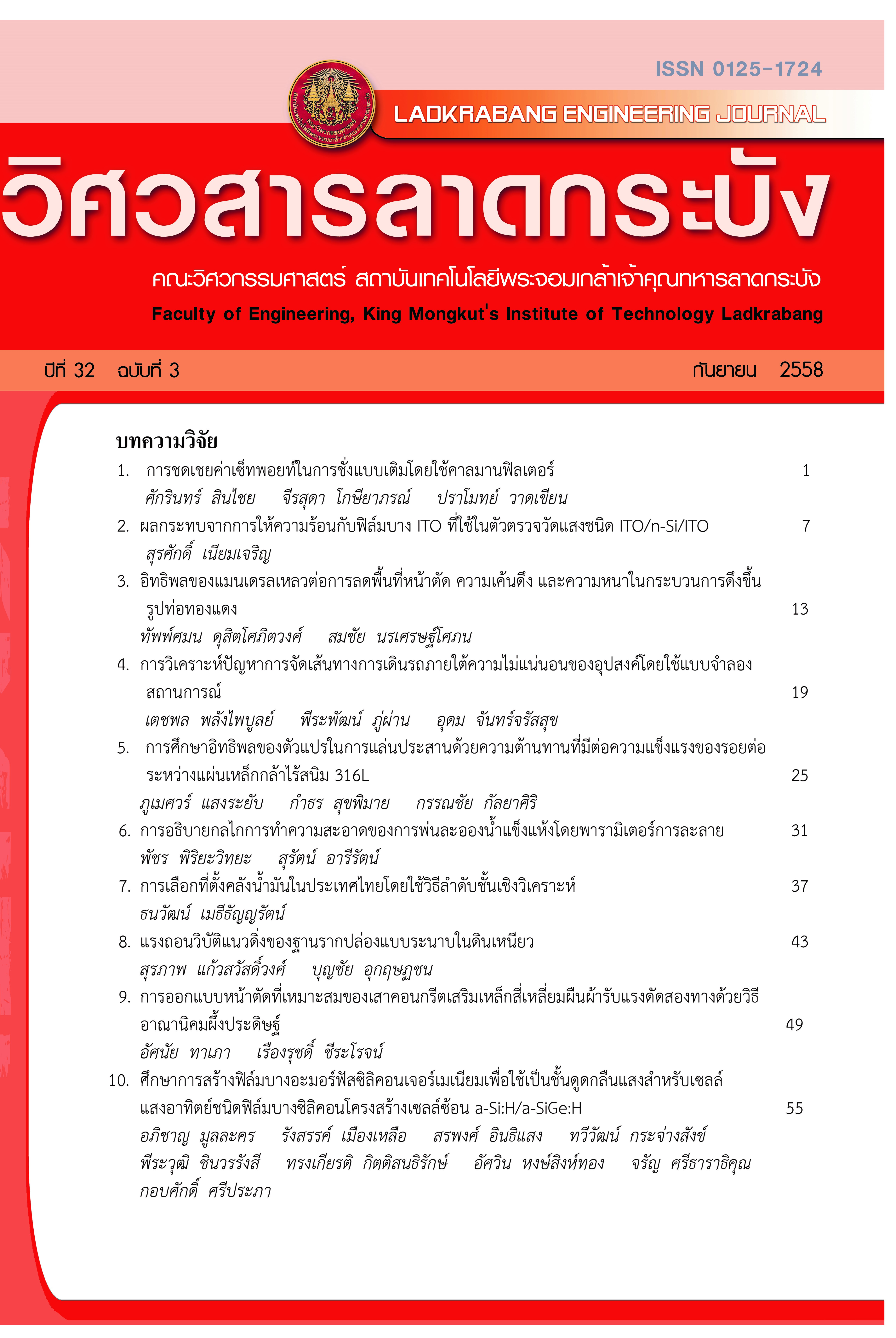An Explanation of Mechanism of Snow Dry Ice Cleaning by Solubility Parameter
Keywords:
Dry cleaning, Snow dry ice cleaning,, Solubility parameterAbstract
This paper explained about one of mechanism of snow dry ice cleaning by solubility parameter. The mechanism for the removal of non-polar organic residues utilizes liquid CO2 solvent properties while the dry ice are attach the surface. Solubility parameter value of liquid CO2 were estimated from temperature and momentum of snow dry ice stream. From our study, solubility parameters value of liquid carbon dioxide for cleaning process are between 16.3-17.1 MPa0.5 when using pressure for supplying carbon dioxide 48 bar temperature for supplying carbon dioxide 5 °C and pressure for supplying carbon dioxide 55 bar temperature for supplying carbon dioxide 5 10 and 15°C at distance from tip of nozzle 2 cm. Solubility parameters value of liquid carbon dioxide are close to solubility parameters value of non-polar organic solvent, which using for dissolve non-polar organic compound e.g., paraffin wax, oil, lube oil. So, Snow dry ice cleaning can be cleaned non-polar organic residues.
References
[2] R. Sherman, “Developments in surface contamination and cleaning: fundamentals and applied aspects”, William Andrew Inc., NJ, USA, 2008, pp.987-1011.
[3] S. Banerjee, A. Campbell, “Principles and mechanisms of sub-micrometer particle removal by CO2 cryogenic technique”, Journal of Adhesion Science and Technology 19 (9), pp. 739–751, 2005.
[4] R. Sherman, P. Adams, “Carbon Dioxide Snow Cleaning - The Next Generation of Clean”, in Proceeding of Clean Tech, p.271, New Jersey: Witter Publishing, Flemington, 1995.
[5] R. Sherman. “Carbon Dioxide Snow Cleaning”, Developments in surface contamination and cleaning: fundamentals and applied aspects,” pp.987-1011, New Jersey: William Andrew Inc. 2008.
[6] C. M. Hasen, “Hansen Solubility Parameters: A User’s Handbook”, CRC Press, London, 2nd ed., 2007.
D. W. Van Krevelen et al., “Properties of Polymers:
[7] Their Correlation with Chemical Structure; their Numerical Estimation and Prediction from Additive Group Contributions”, Elsevier, Amsterdam, 4th ed. 2009.
[8] M. Khayet and V. Fernández, “Estimation of the solubility parameters of model plant surfaces and agrochemicals: a valuable tool for understanding plant surface interactions”, Theoretical Biology and Medical Modeling, 2012.
[9] L. L.Williams et al., Calculation of Hansen solubility parameter values for a range of pressure and temperature conditions, including the supercritical fluid region, Industrial & Engineering Chemistry Research, 2004.
Published
How to Cite
Issue
Section
License
The published articles are copyrighted by the School of Engineering, King Mongkut's Institute of Technology Ladkrabang.
The statements contained in each article in this academic journal are the personal opinions of each author and are not related to King Mongkut's Institute of Technology Ladkrabang and other faculty members in the institute.
Responsibility for all elements of each article belongs to each author; If there are any mistakes, each author is solely responsible for his own articles.






